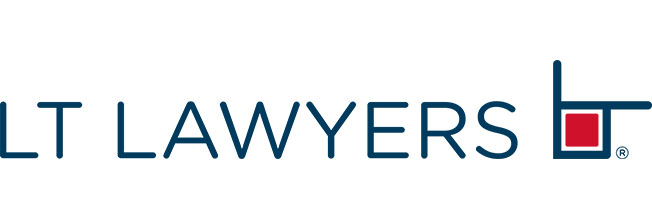- Borrowers should be cautious when deciding whether to pledge their stocks to obtain loans. We have noticed the recent prevalence of a lender-custodian syndicate scam, the modus operandi of which will be introduced below.
Overall image of the Suspected Fraudster Lending Company in Question
- Typically, the suspected fraudster lending company (“Suspected Fraudster”) works as an umbrella brand/ façade for its operating lending associated companies.
- The Suspected Fraudster and its operating lending associated companies are deliberately named to look similar to actual and often renowned financial companies and entities, for example those operating in North America.
- While claiming to have a presence in places similar to that of the actual financial companies with similar names; the claimed office locations on the website of the Suspected Fraudster are mostly, if not all, virtual offices.
- The controlling party of the Suspected Fraudster has deliberately designed its website and its operations similar to a sophisticated financial firm. Its purported “employees” have curated (but in fact fake) profiles on LinkedIn and there are carefully curated press releases on the web in attempts to form a positive image of the Suspected Fraudster.
Modus Operandi of the Suspected Fraudster
- The Suspected Fraudster itself does not conduct any lending business; as stated above, it is more of an umbrella brand. The actual lending business is usually conducted by its lending associated companies.
- It seems that the Suspected Fraudster mostly provides stock loans (but whether it operates other types of loan is currently unknown). The Suspected Fraudster, through third party loan agents, attracts customers by its ultra-low interest rate (“razor-sharp thin”) and a huge amount of loan and requests customers to pledge their shares, often of listed companies (e.g. in Hong Kong), to its designated “custodians” (such as companies branded as professional brokerage firms) which will keep the shares on the Suspected Fraudster’s behalf. The custodians may or may not be based in Hong Kong, but any shares purportedly deposited into the custodian (which may be based in overseas) would actually be held in an account with a Hong Kong broker. This means that the shares would not actually be transferred out of e.g. Hong Kong’s Central Clearing and Settlement System (CCASS).
- The Suspected Fraudster will then arrange the customer to sign a few documentations to establish its rights over the listed company shares, including:
- A stock loan agreement, the terms of which are extremely pro-lender (i.e. the Suspected Fraudster) e.g. rehypothecation rights (right to use the pledged shares as collateral for loans to the Suspected Fraudster), 10% liquidated damages, wide interpretation of events of default (which will allow the Suspected Fraudster to transfer the shares to its own accounts), collecting originating fees and maintenance fees on top of the loan itself etc. The governing law of the stock loan agreement is usually the laws of Singapore; and
- A collateral/ custodian management agreement (“CMA”), which regulates the relationship among the Suspected Fraudster, the custodian and the borrower. Usually the agreement provides that the custodian must only act upon the Suspected Fraudster’s instructions and not the borrower’s.
- After signing the documentations, the Suspected Fraudster will require the borrower to deposit the entire lot of shares to be pledged to the Suspected Fraudster into an account of the custodian.
- It should be noted that a characteristic of these stock loan scams is that most of the communications between the Suspected Fraudster and the borrower were often handled or at least initiated by third party loan agents.
- The Suspected Fraudster will then assess the price of the share of the subject listed company and will often form the opinion that the share price is too volatile. It would then only agree to provide the loan in tranches, each at a small fraction of the total loan amount, against a number of “collateralized shares” to, allegedly, protect its position. However, the total lot of shares remain in the custody of the custodian and often cannot be transferred out despite the borrower’s instructions pursuant to the CMA.
- The Suspected Fraudster will then prepare a closing statement to put into writing the collateralized shares arrangement and ask the borrower to sign, failing which the Suspected Fraudster may allege the borrower to be in breach of the stock loan agreement. In the event that the borrower refuses to sign the closing statement, the Suspected Fraudster will demand payment of a 10% break-up fee or threaten to dispose of the shares pledged to satisfy the fee.
- If the borrower signs the closing statement and settlement, the Suspected Fraudster may or may not release tranches of the loan to the borrower. The loan tranches were often disbursed with delay; after one to two tranches, the Suspected Fraudster will use the fluctuation of the share price and the purported increased risk as an excuse to request the borrower to pile in more shares as collateral, and will often commission a third party (which is often a fake company as well, with names akin to real companies and purported office addresses which are in fact virtual office addresses) to produce an enhanced due diligence report to support the Suspected Fraudster’s claim.
- In the meantime, the Suspected Fraudster may direct the custodian to sell/ transfer the whole lot of collateralized stock to other third party to make money.

- If you suspect that you are a victim in a similar scam, do not hesitate to contact the police and seek legal advice. In our next article, we have also proffered some possible remedial actions a victim may take when facing such suspected scams.
Disclaimer
The above contents by no means constitute any legal advice or recommendation by LT Lawyers. Please contact KM Liew at LT Lawyers if you have any inquiries about this article. You should seek professional advice before taking any action in relation to the matters dealt with in this article.
Copyright
If reprint of the above contents or any part thereof is desired, please specify at the forefront of any and all such reprint the source of such contents, namely “LT LAWYERS”.


